January 29th, 2016 What’s Up?
Most of Thursday was spent finishing the Southern Oceans Photography Guide. I have about ten minutes more work to do on that. It will be formally announced here soon. 128 pages, 16,500 words, 175 educationally captioned images: $100. The information in this guide can make or break your trip, save your gear, and possibly even save your life. if you cannot wait a few days, please call the office at 863-692-0906 to order your copy.
The pool was up to a truly balmy 77 degrees as the heater chiller did its job. A big lazy yesterday, I skipped both my core exercises and my ice bath. Today I will get back with the program. The Namibia IPT is sold out. Yesterday, Bill Fraser sold his 1D Mark IV body in excellent condition for $1299 and the sale of Brent Bridges 300 f/2.8L IS II for $4599 became final.
This blog post took 2 1/2 hours to prepare.
The Streak
Today’s blog post marks 88 days in a row with a new blog post. Again, please remember to use our B&H links for your major gear purchases. Your doing so is always greatly appreciated. 🙂
|
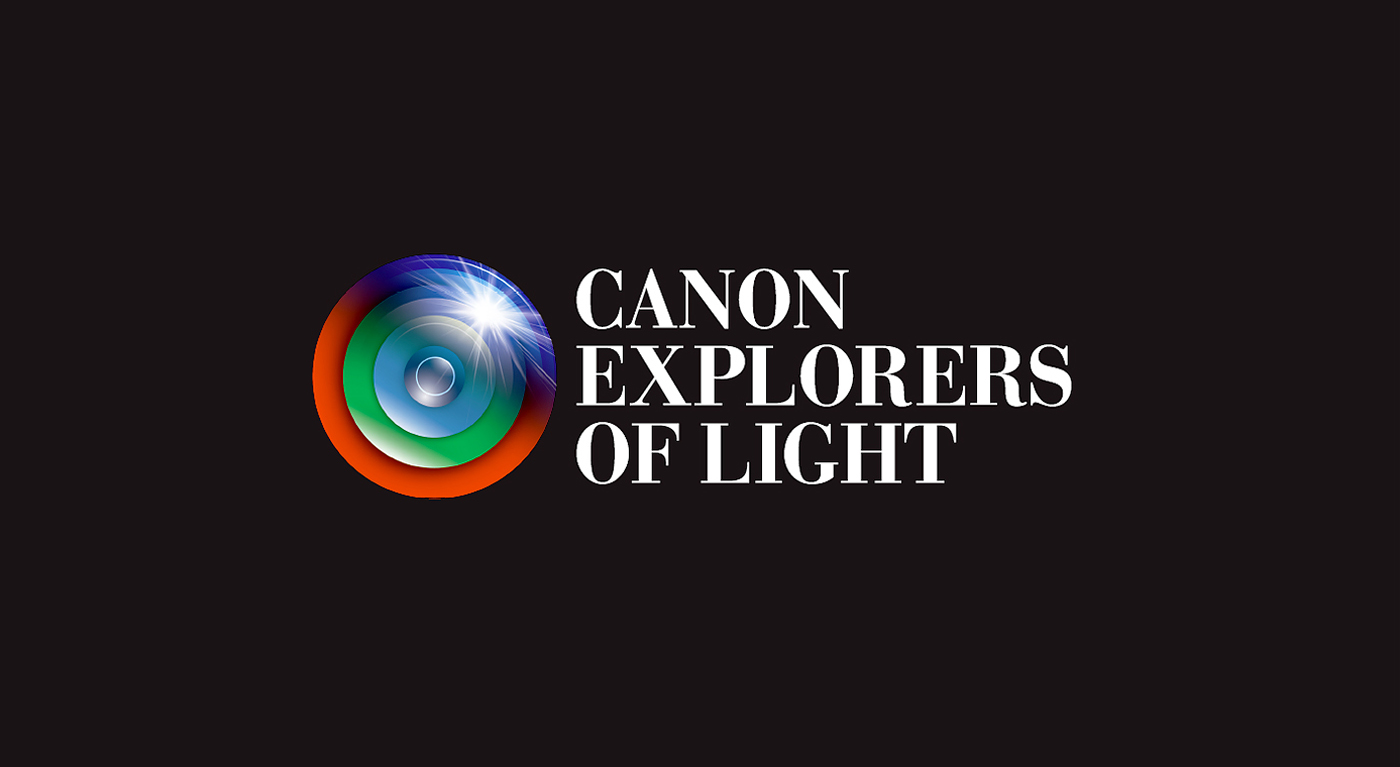
|
|
Thanks to Dan Neri, Len Musmeci, and the Canon Explorers of Light program for their support of the Camera Club of Brevard speaking gig.
|
Melbourne EoL Speaking Event
On Tuesday, February 2, 2016 I will be presenting “A Bird Photographer’s Story” for the Camera Club of Brevard. The meeting begins at 6:30pm and is free and open to the public. This program is sponsored by Canon USA/Explorers of Light. A small selection of books and CDs will be available for sale. You can find complete details including the location here.

B&H
B&H contributed generously as the primary SDNHM exhibition sponsor. Thank them (and me for the blog) by clicking on the logo link above to shop.
|
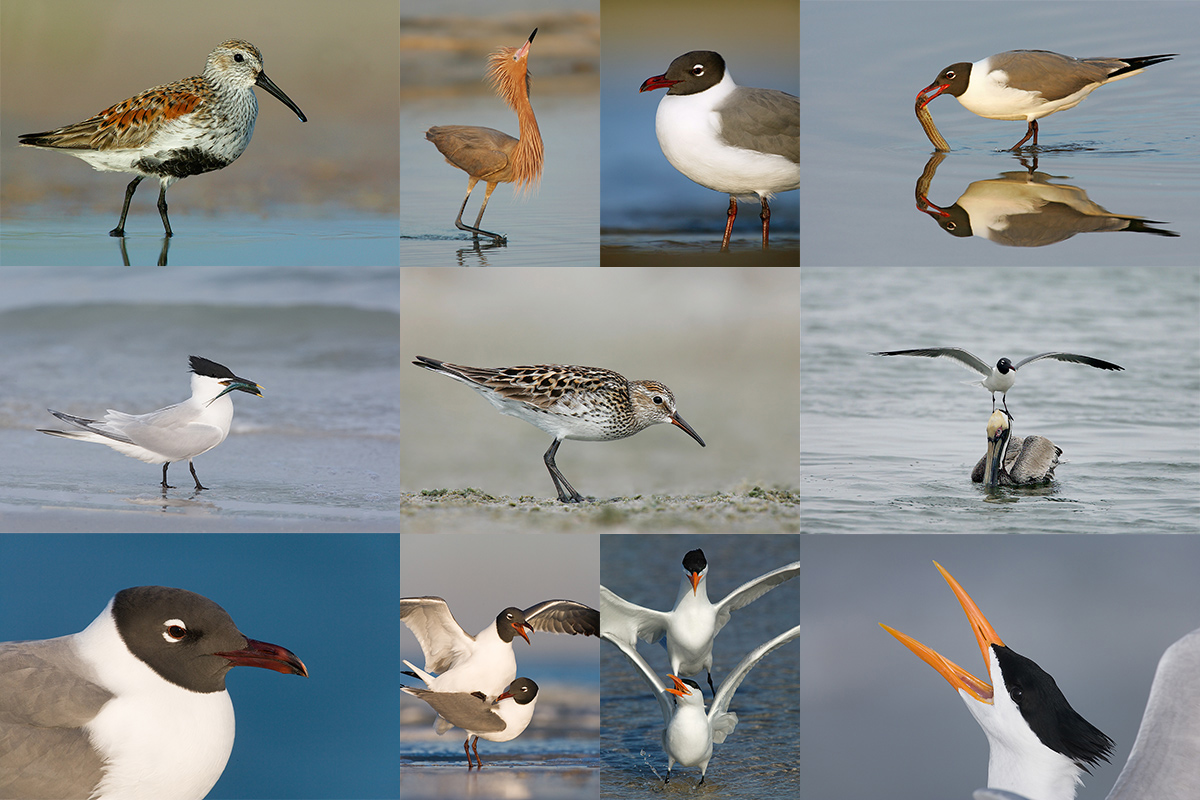
|
|
DeSoto in spring is rife with tame and attractive birds. From upper left clockwise to center: breeding plumage Dunlin, dark morph breeding plumage Reddish Egret displaying, breeding plumage Laughing Gull/front end vertical portrait, breeding plumage Laughing Gull with prey item, Laughing Gull on head of Brown Pelican, screaming Royal Tern in breeding plumage, Royal Terns/pre-copulatory stand, Laughing Gulls copulating, breeding plumage Laughing Gull/tight horizontal portrait, Sandwich Tern with fish, and a really rare one, White-rumped Sandpiper in breeding plumage, photographed at DeSoto in early May.
|
Fort DeSoto IPT: May 10-13, 2016. 3 1/2 DAYS: $1399
Meet and Greet at 3pm on Tuesday May 10.
Fort DeSoto is one of the rare locations that might offer great bird photography 365 days a year. It shines in spring. There will Lots of tame birds including breeding plumage Laughing Gull and Royal and Sandwich Terns. With luck, we will get to photograph all of these species courting and copulating. There will be American Oystercatcher and Marbled Godwit plus sandpipers and plovers, some in full breeding plumage. Black-bellied Plover and Red Knot in stunning breeding plumage are possible. There will be lots of wading birds including Great and Snowy Egrets, both color morphs of Reddish Egret, Great Blue, Tricolored and Little Blue Heron, Yellow-crowned Night-Heron, and killer breeding plumage White Ibis. Roseate Spoonbill and Wood Stork are possible and likely. We should have lots of good flight photography with the gulls and terns and with Brown Pelican. Nesting Least Tern and nesting Wilson’s Plover are possible.
We will, weather permitting, enjoy 7 shooting sessions. Our first afternoon session will follow the meet and greet on Tuesday May 10. For the next three days we will have two daily photo sessions. We will be on the beach early and be at lunch (included) by 11am. At lunch we will review my images–folks learn a ton watching me choose my keepers and deletes–why keep this one and delete that one? If you opt to bring your laptop, we will be glad take a look at a few of your best images from the morning session. We will process an image or two in Photoshop after converting them in DPP. Our lunch learning session will be followed by a break that for me will include Instructor Nap Time. Afternoon sessions will generally run from 4:30pm till sunset. We photograph until sunset on the last day, Friday the 13th… Please note that this is a get-your-feet and get-your-butt wet and sandy IPT. And that you can actually do the whole IPT with a 300 f/2.8L IS, a 400 f/4 ID DO lens with both TCs, or the equivalent Nikon gear. I will likely be using my new 500 II as my big glass and have my 100-400 II on my shoulder.
|
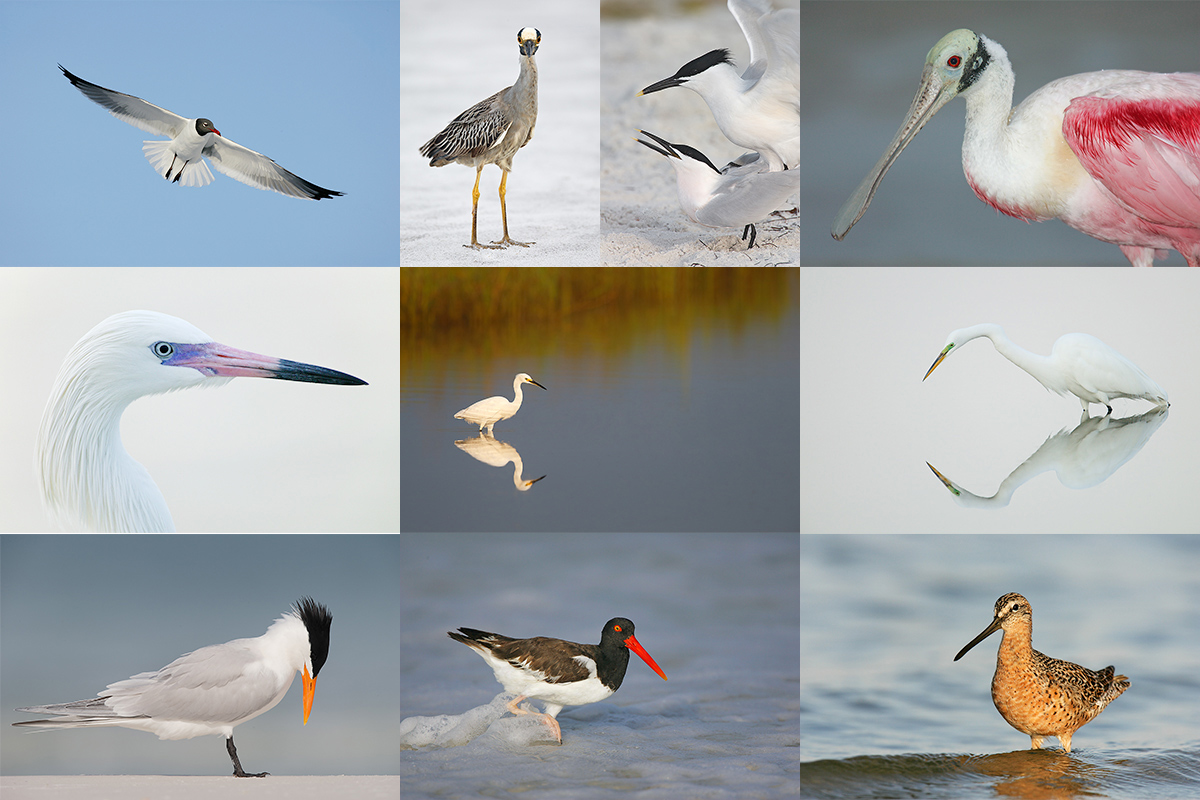
|
|
DeSoto in spring is rife with tame and attractive birds. From upper left clockwise to center: Laughing Gull in flight, adult Yellow-crowned Night-Heron, copulating Sandwich Terns, Roseate Spoonbill, Great Egret with reflection, Short-billed Dowitcher in breeding plumage, American Oystercatcher, breeding plumage Royal Tern, white morph Reddish Egret, and Snowy Egret marsh habitat shot.
|
What You Will Learn
You will learn to approach free and wild birds without disturbing them, to understand and predict bird behavior, to identify many species of shorebirds, to spot the good situations, to understand the effects of sky and wind conditions on bird photography, to choose the best perspective, to see and understand the light, to get the right exposure every time after making a single test exposure, and to design pleasing images by mastering your camera’s AF system. And you will learn how and why to work in Manual mode (even if you are scared of it).
The group will be staying at the Magnuson Hotel/Marina Cove, 6800 Sunshine Skyway Lane South, St. Petersburg, FL, 33711. Tel: 727-867-1151. I use Hotels.com. The best airport is Tampa (TPA). A deposit of $499 is required to hold your spot. Your balance will be due on March 10, 2016. Please call Jim or Jennifer at 863-692-0906 to register. The $5 park entry fee is on you. Tight carpools are recommended. The cost of three lunches is included. Breakfasts are grab what you can on the go, and dinners are also on your own due to the fact that we will usually be getting back to the hotel at about 9pm. Non-photographer spouses, friends, or companions are welcome for $100/day, $350 for the whole IPT.
Why Join an IPT?
For many folks, hands-on, in-the-field instruction is the very best way for them to learn to improve their skills… To see some early spring DeSoto images, click here.
I don’t give up easily…
When I announced the Nickerson Beach Terns/Skimmers/Oystercatchers Instructional Photo-Tour (IPT) here the other day, I wrote: Click on each IPT card to enlarge it. Then leave a comment letting us know which is your very favorite image. And do let us know why. While I love ’em all, I will share my three favorites with you here soon.
Not a single person responded…
Fort DeSoto Site Guide
Can’t make it in mid-May? Get yourself a copy of the Fort DeSoto Site Guide. Learn the best spots, where to be when in what season in what weather. Learn the best wind directions for the various locations. BAA Site Guides are the next best thing to being on an IPT. You can see all of them here.
Shorebirds/Beautiful Beachcombers
If shorebirds give you pause, get yourself a copy of my Shorebirds/Beautiful Beachcombers. Includes ID tips, shorebird biology, migration, and tons more. All in my simple-to-read easy-to-read style.
|
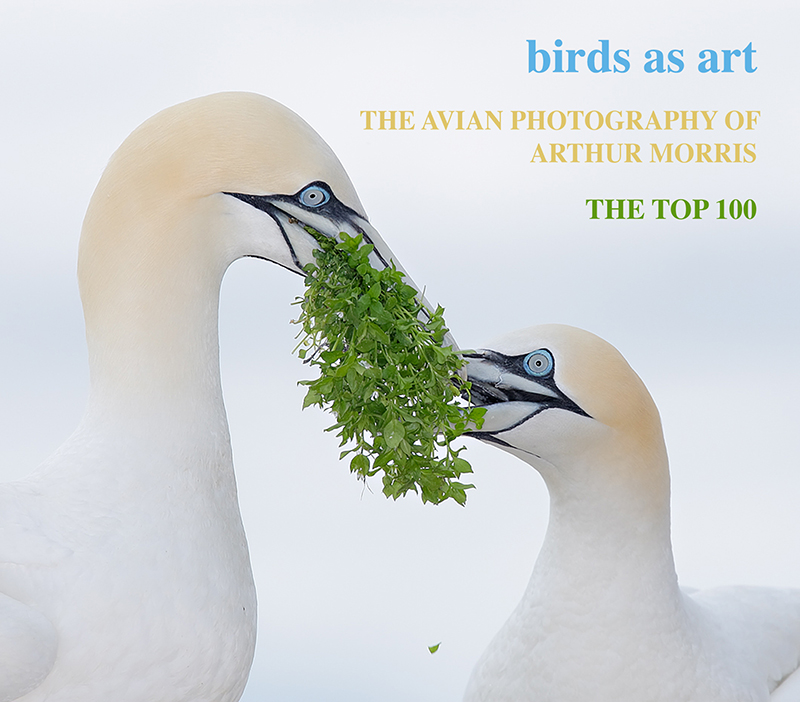
|
birds as art: The Avian Photography of Arthur Morris/The Top 100
The companion e-book to the solo exhibit at TheNat, San Diego, California
The new e-book on CD is available here. The new e-book via is also available via convenient download for $20 by clicking here.
|
From Rod Anton via e-mail
Dear Artie, Beyond the superlatives you have received for your beautiful presentation, all of which I agree with whole heartedly, I would like to add my thoughts about your exhibition. I see the the dedication, the determination, the passion and the tenacity that drives you, as well as your love of the birds and of your love of photography. Congratulations. The exhibit-companion CD deserves a shout out. Sincerely, Rod Anton
Please Remember to use our Affiliate Links 🙂
To show your appreciation for my continuing efforts here, we ask, as always, that you get in the habit of using my B&H affiliate links on the right side of the blog for all of your photo and electronics purchases. Please check the availability of all photographic accessories in the BIRDS AS ART Online Store, especially the Mongoose M3.6 tripod heads, Gitzo tripods, Wimberley heads and plates, LensCoats and accessories, and the like. We sell only what I have used, have tested, and can depend on. We will not sell you junk. We know what you need to make creating great images easy and fun. And we are always glad to answer your gear questions via e-mail. I just learned that my account was suspended during my absence; it should be up and running by Monday at the latest.
I would of course appreciate your using our B&H affiliate links for all of your major gear, video, and electronic purchases. For the photographic stuff mentioned in the paragraph above we, meaning BAA, would of course greatly appreciate your business. Here is a huge thank you to the many who have been using our links on a regular basis and visiting the BAA Online store as well.
Facebook
Be sure to like and follow BAA on Facebook by clicking on the logo link upper right. Tanks a stack!
Typos
In all blog posts and Bulletins, feel free to e-mail or to leave a comment regarding any typos or errors. Just be right 🙂
January 28th, 2016 What’s Up?
I slammed on adding photos to the Southern Ocean Photography Guide and am hoping to finish work on this new e-book today.
It poured here early yesterday morning and drizzled for most of the day, but it was a lot warmer than it had been. As a result, the pool was up to an almost balmy 75 degrees for my midday swim. I did my core, knee, and shoulder exercises and had a nice ice bath at 6:30pm.
In the good news department the Namibia IPT is just about sold out; I am waiting to hear for sure on the last sign up. And I learned of several addition Used Photo Gear Sales. That page is really hopping lately.
Today’s blog post took almost two hours to assemble.

B&H
B&H contributed generously as the primary SDNHM exhibition sponsor. Thank them (and me for the blog) by clicking on the logo link above to shop.
The Streak
Today’s blog post marks 87 days in a row with a new educational blog post. Again, please remember to use our B&H links for your major gear purchases. Your doing so is always greatly appreciated. 🙂
Selling Your Used Gear Through BIRDS AS ART
Selling your used (or like-new) photo gear through the BAA Blog or via a BAA Online Bulletin is a great idea. We charge only a 5% commission. One of the more popular used gear for sale sites charges a minimum of 20%. Plus assorted fees! Yikes. The minimum item price here is $500 (or less for a $25 fee). If you are interested please e-mail with the words Items for Sale Info Request cut and pasted into the Subject line :). Stuff that is priced fairly–I offer free pricing advice, usually sells in no time flat. In the past few months, we have sold just about everything in sight. Do know that prices on some items like the EOS-1D Mark IV, the old Canon 500mm, the EOS-7D, and the original 400mm IS DO lens have been dropping steadily. You can see all current listings by clicking here or by clicking on the Used Photo Gear tab on the yellow-orange tab on the right side of the menu bar above.
Douglas Bolt sold his Tamron SP 150-600mm f/5-6.3 Di VC USD Zoom lens for Canon in like-new condition for $699, Diane Miller sold her 300mm f/2.8L IS lens, the old three, for $2899, and Roberta Olenick sold her Canon EOS-1D Mark IV camera body in excellent condition for $1279 USD, all within the last week. I learned last Wednesday that the sale of IPT veteran Brent Bridges’ 300mm f/2.8L IS lens for $4599 is pending. Mark Hodsgon’s 70-200mm f/4L IS lens sold and I purchased his brand new 1.4 and 2X III TCs for his full asking price on Monday. Walt Thomas sold his used Canon 100mm f/2.8L IS USM Macro lens in mint condition for $749. On Tuesday Erik Hagstrom sold his Canon EF 24-70mm f/2.8L II USM lens and Bill Condon sold his Canon 500mm f/4L IS USM lens in like-new, near-mint condition for the full asking price, $4199, in one day after getting three offers.
When I sent a follow-up e-mail asking that Bill check the listing, he sent this lovely e-mail in reply:
Artie, the listing was more than perfect. I had three offers in the first 36 hours and my lens was sold for asking price on the second day! I am grateful for your help: your added words gave true legitimacy to the value of my lens. Thank you, thank you, thank you! Bill
And just yesterday, Saul Pleeter sold his Sony Alpha a7R Mirrorless Digital Camera in near-new condition for $799 on the first day it was listed.
After all the work that I have put into the Used Gear Sales Page, I know how to price the stuff fairly so that it will sell fairly quickly. And for items that I am not familiar with I have taught myself how to come up with solid prices…
New Listings
Canon 500mm f/4L IS II USM Lens
Mark Hodgson is offering a lightly used Canon 500mm f/4L IS II USM lens in mint condition for the ridiculous BAA lowest-ever price of $7499. The sale includes everything that came with the lens originally including the 500B lens case, ET-138W II hood, E-163B lens cap, manual and all packaging materials. Also included are a Wimberley P-40 lens plate and LensCoat Realtree Max LensCoat that has been on the lens since day one. Insured shipping via major courier is included. Your item will not ship until your check clears unless other arrangements are made.
Please contact Mark by e-mail or by phone at 904-607-2827 (Eastern time).
I just bought another 500 II (after selling the first one that I owned a while back) as it is so much easier to travel with than the 600 II. After seeing that Mark’s TC was pretty much brand new I would have bought his 500 II had I known about it three weeks ago. Needless to say, the 500 f/4 lenses are the world’s most popular for birds, nature, and wildlife. artie
ps: you can learn a ton more about the 500 II here.
Canon EOS 5D Mark III
Mark Hodgson is also offering a used Canon 5D Mark III camera together with a Canon BG-E11 battery grip and two Canon batteries for $1899. Everything is in excellent plus condition. The sale includes all the original materials – boxes, packing materials, manuals, CD’s, battery charger, accessory cables, etc. The camera was cleaned by Canon Professional Services in November and they verified the shutter count at an extremely low 15,962. It has only been used a couple of times since then. Insured shipping via major courier is included. Your item will not ship until your check clears unless other arrangements are made.
Please contact Mark by e-mail or by phone at 904-607-2827 (Eastern time).
I have used the 5D III for birds on occasion with excellent results, even with the 2X III TC and the 600 II. It has long been my go-to dSLR for flowers, landscapes, and Urbex photography. artie
B&H
B&H was the primary sponsor of my solo, career retrospective, 67-image exhibit at the San Diego Natural History Museum. Thank them (and me, for the work I do on the blog) by clicking on the logo link above to shop for camera bodies and lenses.
|
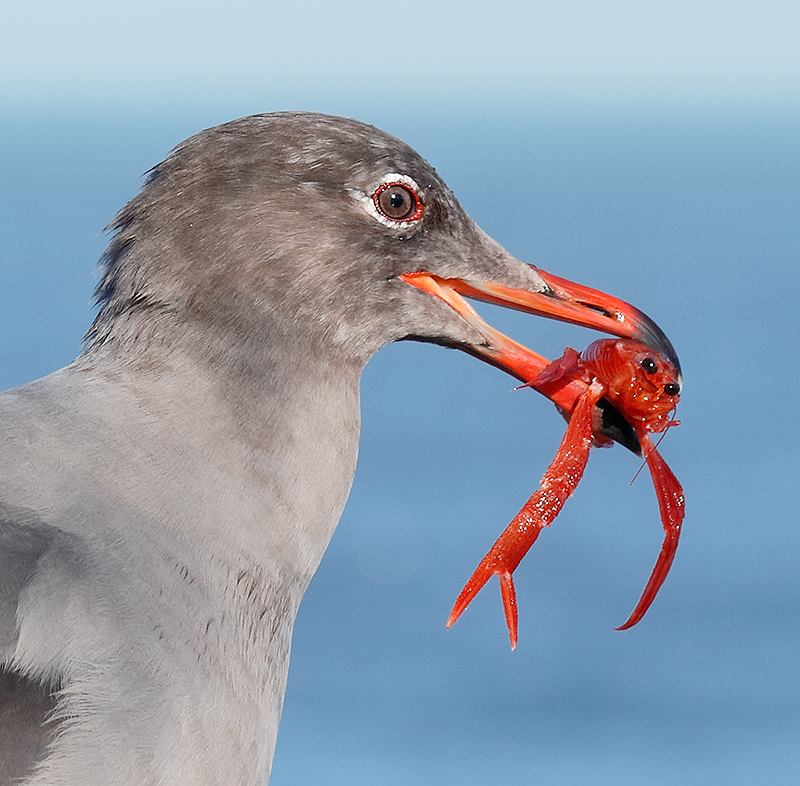
|
|
This is the color corrected version of the tight crop of yesterday’s featured image; the BLUEs look so much more natural now.
Heermann’s Gull with Red tuna crab (Pleuroncodes planipes)
|
The Color Correction
While responding the many comments on yesterday’s blog post I noticed that I had gone way too far with the Click White Balance in DPP 4. The image was way too CYAN (AQUA in Canon-speak). Rather than start over by re-converting the RAW file I simply brought the two images in Photoshop, added a Selective Color layer, selected the BLUE channel from the dropdown menu, and moved the CYAN slider all the way to the left to -100%. Ah, perfection; the BLUEs now look so much more natural.
You can learn a ton more on balancing the color in your images in my Digital Basics File. That in addition to dozens of great Photoshop tips.
Red tuna crab (Pleuroncodes planipes)
While several folks nailed the ID of yesterday’s mystery prey item, Warren Jacobi was the first to get in touch on that and his follow-up e-mails on the subject added additional insight. Here is his comment at yesterday’s blog post:
The bright red crustacean in the gull picture is a Red tuna crab (Pleuroncodes planipes – also known as tuna crab, pelagic red crab and langostilla in Spanish). While the name says “crab” they are actually a species of lobster. During El Nino years they sometimes show up in large numbers along the San Diego coastline – mostly from Ocean Beach to La Jolla – right where you were photographing. When an El Nino occurs, many food sources for gulls disappear and gulls being opportunists eat many of the little guys.
I was happy to learn that the little guy was actually a lobster as I had assumed from the get-go. I am always amazed by the fact that as a group, the folks who read the blog regularly can be depended on to know just about everything about everything! The collective base of knowledge here is indeed phenomenal. You can learn more about Red Tuna Crab here.
The Whole Regurgitant Story
I should have mentioned this yesterday: the gulls eat the little buggers and then regurgitate pellets that include some of the hard parts of the crabs. In gulls, this pellet is called a bolus. Thus the red stuff all over the rocks along with the whitewash includes bits of the Red Tuna Crabs…
|
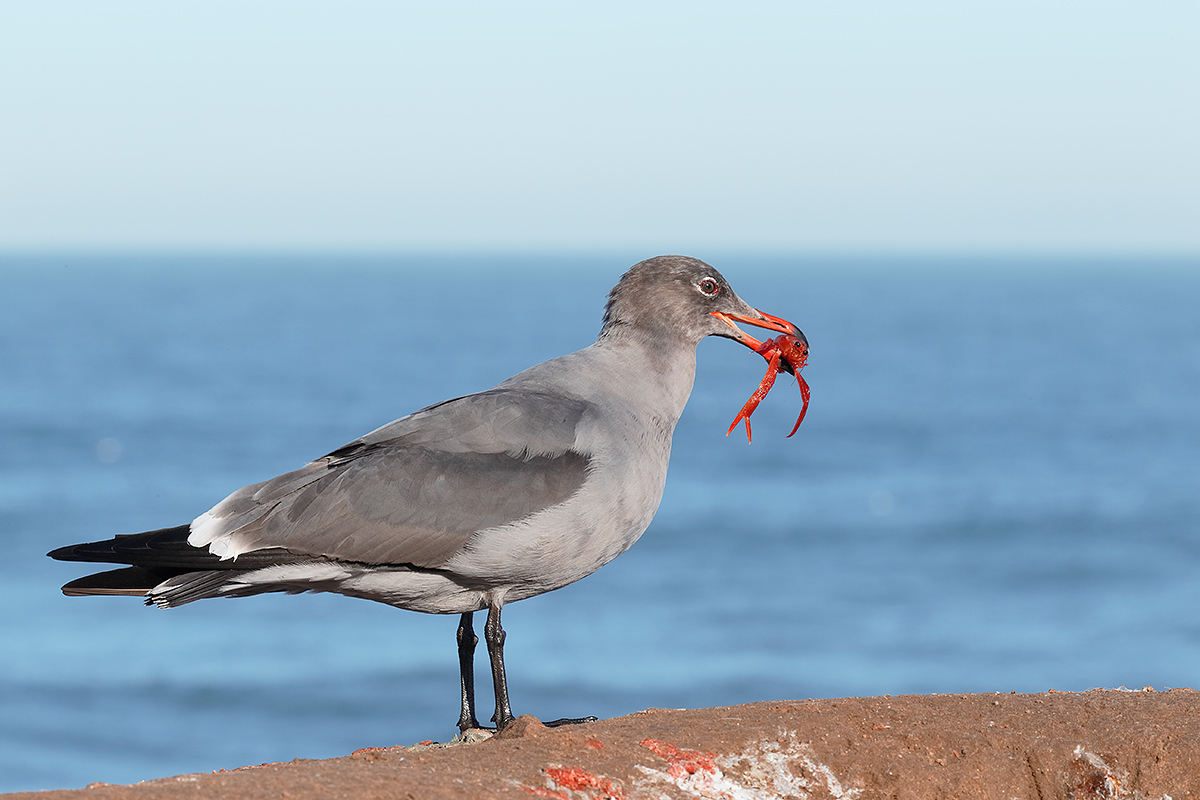
|
|
And this is the color corrected version of the image that was made on the first morning of the 2015 San Diego IPT with the hand held Canon EF 100-400mm f/4.5-5.6L IS II USM lens and the Canon Extender EF 1.4X III with the rugged Canon EOS-1D X. ISO 400. Evaluative metering +1/3 stop: 1/160 sec. at f/18 in Manual mode was less than ideal.
Center AF point (by necessity)/AI Servo Expand/Rear Focus AF as originally framed was active at the moment of exposure (as is always best when hand holding). Click here to see the latest version of the Rear Focus Tutorial. Click on the image to see a larger version.
|
My Critique of Yesterday’s Featured Image
The head angle of the bird is actually pretty good; the huge problem is that the bird was angled away from the plane of the imaging sensor, i.e., angled away from the plane of the back of the camera. The second big problem was that the horizon line nearly intersected with the top of the head. This is a very distracting and very common error. Yes I needed to be eight yards to my right to parallel the subject. And yes, I needed to be about five yards taller. I was, however, in a deep trench between the rocks and as a result was shooting up at the gull; the angle to the bird was too steep. This caused the gull’s feet to be partially hidden behind the sandstone.
I did follow my “shoot now and ask questions later” rule. But at the same time, I broke my “always go for the BBC-winning image at the expense of getting nothing” rule. Why? I knew that I did not have the time to climb out up and out of the trench while the gull held the prey item intact in its bill.
In addition, it would have been better to have had the subject well higher in the frame so as to include more of the sandstone and whitewash, if only to give me more cropping options. But my goal, a rather unusual one for me, was to acquire focus and create at least one sharp image of this neat behavior that I had never seen before.
Thanks to all who joined in the learning fun by leaving a comment at yesterday’s blog post.
And yes, a wider aperture would have softened up the background waves a bit.
The Shutter Speed Question
In yesterday’s blog post I asked, “Why were the exposure settings less than ideal?” Most folks fanned on that one until Brendan left this comment:
Thanks for this! I dunno – the picture looks lovely to me. I am not sure why such a narrow aperture was used with a relatively slow shutter speed. I would guess with a wider aperture the ocean/horizon would be more pleasantly blurred and the shutter speed could be much faster. Maybe with the faster shutter speed you would pull out more feather detail? Though I doubt there is much movement blur – looks sharp to me. I would like to see the birds feet, though that’s minor.
This is adapted from my response:
Hey Brendan, Finally someone is on the right track. There was no reason to be at 1/160 at f/18 in this situation, other than the fact that I was doing something else where I needed lots of d-o-f and followed my old rule: shoot first and ask questions later lest you miss everything. The image is sharp, very sharp. But the next frame in the sequence, one that featured a slight head turn towards me, suffered from motion blur. In general, you would want a shutter speed of at least 1/800 second for your general bird photography when the potential for action exists. 1/1250 or 1/1600 sec. would be even better.
As for the AF point, you need to go back and read the whole thing and the comments more carefully 🙂 artie
The AF Question
Why was I limited to only the center AF point? I hear this about six times a day on most IPTs: My camera is broken; I can’t move my AF point!”
When you are working with the 1.4X TC and an f/5.6 lens, or when you are working with the 2X III TC and an f/4 lens, you are at effective f/8. With all of the more recent Canon camera bodies, you will have autofocus at f/8 but it will be limited to the center AF point (plus the four assist points if you set AF Expand). So no, your camera ain’t broken.
BirdPhotographer’s.Net (BPN)
The very best way to learn to evaluate your images is to plunk down your forty bucks and join BPN. You post your images and have them critiqued by many of our fine moderators and lots of skilled members, and in turn, you get to learn a ton by commenting on the images of others. And best of all, it ain’t just birds! There are image critique forums that cover other areas. These include Wildlife, Macro and Flora, Landscapes, Cityscapes and Travel, Out Of The Box, In Camera and Post Processing Techniques, Framing Your Images With Words, and Story Sequences. In addition, beginning nature photographers can receive extra help in the Eager to Learn Forum. You can click here to access any of the aforementioned forums in addition to the Photography Discussion (and other) forums. If you join and post an image please e-mail me the link and I will be glad to stop by and comment.
Please Remember to use our Affiliate Links 🙂
To show your appreciation for my continuing efforts here, we ask, as always, that you get in the habit of using my B&H affiliate links on the right side of the blog for all of your photo and electronics purchases. Please check the availability of all photographic accessories in the BIRDS AS ART Online Store, especially the Mongoose M3.6 tripod heads, Gitzo tripods, Wimberley heads and plates, LensCoats and accessories, and the like. We sell only what I have used, have tested, and can depend on. We will not sell you junk. We know what you need to make creating great images easy and fun. And we are always glad to answer your gear questions via e-mail. I just learned that my account was suspended during my absence; it should be up and running by Monday at the latest.
I would of course appreciate your using our B&H affiliate links for all of your major gear, video, and electronic purchases. For the photographic stuff mentioned in the paragraph above we, meaning BAA, would of course greatly appreciate your business. Here is a huge thank you to the many who have been using our links on a regular basis and visiting the BAA Online store as well.
Facebook
Be sure to like and follow BAA on Facebook by clicking on the logo link upper right. Tanks a stack!
Typos
In all blog posts and Bulletins, feel free to e-mail or to leave a comment regarding any typos or errors. Just be right 🙂
January 27th, 2016 What’s Up?
I added about 50 images to the Southern Ocean Photography Guide, ordered some warm clothing for my upcoming Japan trip, and answered another zillion e-mails. Swim, core exercises, ice bath, and three healthy meals made for a perfect day.
Today’s blog post took nearly three hours to assemble, from soup to nuts.

The Streak
In spite of having been buried by travel, teaching, the exhibit, and several major writing projects for the last two months, today’s blog post marks 86 days in a row with a new educational blog post. Again, please remember to use our B&H links for your major gear purchases. Your doing so is always greatly appreciated. 🙂
B&H
B&H was the primary sponsor of my solo, career retrospective, 67-image exhibit at the San Diego Natural History Museum. Thank them (and me, for the work I do on the blog) by clicking on the logo link above to shop for camera bodies and lenses.
Selling Your Used Gear Through BIRDS AS ART
Selling your used (or like-new) photo gear through the BAA Blog or via a BAA Online Bulletin is a great idea. We charge only a 5% commission. One of the more popular used gear for sale sites charges a minimum of 20%. Plus assorted fees! Yikes. The minimum item price here is $500 (or less for a $25 fee). If you are interested please e-mail with the words Items for Sale Info Request cut and pasted into the Subject line :). Stuff that is priced fairly–I offer free pricing advice, usually sells in no time flat. In the past few months, we have sold just about everything in sight. Do know that prices on some items like the EOS-1D Mark IV, the old Canon 500mm, the EOS-7D, and the original 400mm IS DO lens have been dropping steadily. You can see all current listings by clicking here or by clicking on the Used Photo Gear tab on the yellow-orange tab on the right side of the menu bar above.
Douglas Bolt sold his Tamron SP 150-600mm f/5-6.3 Di VC USD Zoom lens for Canon in like-new condition for $699, Diane Miller sold her 300mm f/2.8L IS lens, the old three, for $2899, and Roberta Olenick sold her Canon EOS-1D Mark IV camera body in excellent condition for $1279 USD, all within the last week. I learned last Wednesday that the sale of IPT veteran Brent Bridges’ 300mm f/2.8L IS lens for $4599 is pending. And I learned last Thursay that Mark Hodsgon’s 70-200mm f/4L IS lens became pending on the day that it was listed. More recently Walt Thomas sold his used Canon 100mm f/2.8L IS USM Macro lens in mint condition for $749 and just yesterday Erik Hagstrom sold his Canon EF 24-70mm f/2.8L II USM lens and Bill Condon sold his Canon 500mm f/4L IS USM lens in like-new, near-mint condition for the full asking price, $4199, in one day after getting three offers.
When I sent a follow-up e-mail asking that Bill check the listing, he sent this lovely e-mail in reply:
Artie, the listing was more than perfect. I had three offers in the first 36 hours and my lens was sold for asking price on the second day! I am grateful for your help: your added words gave true legitimacy to the value of my lens. Thank you, thank you, thank you! Bill
After all the work that I have put into the Used Gear Sales Page, I know how to price the stuff fairly so that it will sell fairly quickly. And for items that I am not familiar with I have taught myself how to come up with solid prices…
New Listing
Nikon D4 dSLR Professional Camera Body
Sash Dias is offering a used Nikon D4 body in excellent condition for $2399; the body is pristine except for a small rub mark near the mic button. It is a Nikon USA body, has been babied for its entire life, and has less than 30,000 actuations. The sale includes the Nikon D4 body, the front body cap, the original battery and battery charger and insured shipping via USPS Priority Mail. Your item will not ship until your check clears unless other arrangements are made.
Please contact Sash by e-mail or by phone at 508-439-1097 (Eastern time).
New Nikon Gear
Click here for a link to slew of new Nikon stuff.
|

|
|
Nikon’s two new flagship bodies are available for pre-order now; if you want and need one of these, please use one of the two product specific links below to support my efforts here on the BAA Blog.
|
Nikon’s Two New Flagship DSLRs
About ten days ago Nikon introduced two flagship camera bodies, the Nikon D5 DSLR Camera (Dual CompactFlash) and the Nikon D5 DSLR Camera (Dual XQD). XQD is a new, faster type of card.
Canon EOS-1D X II
As for me, I can’t wait for the 1D X II to be announced…
|
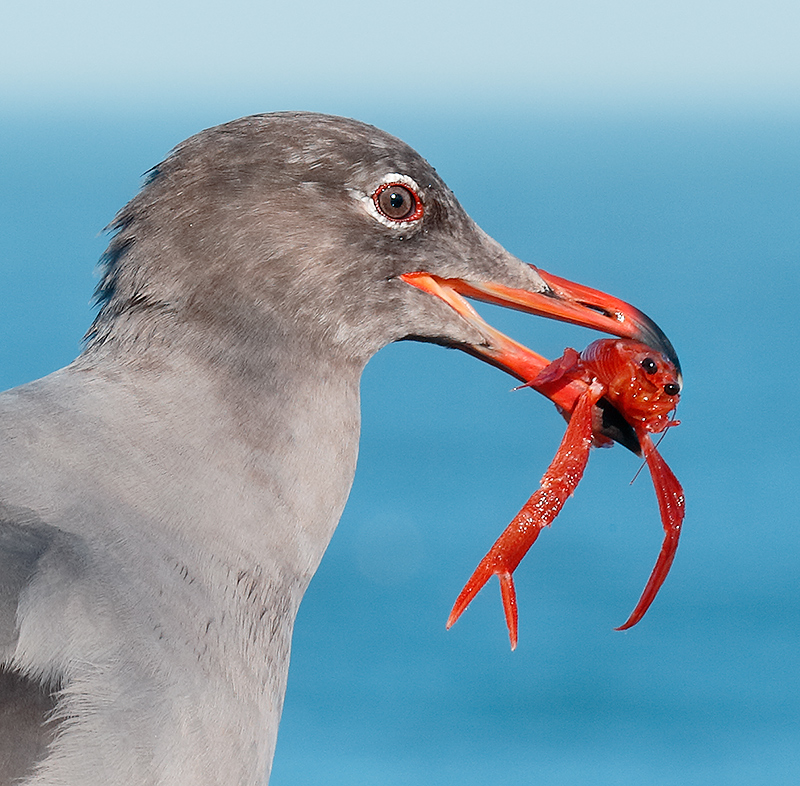
|
|
This is the original image (see photo next) from which this tight crop was created was made on the first morning of the 2015 San Diego IPT with the hand held Canon EF 100-400mm f/4.5-5.6L IS II USM lens and the Canon Extender EF 1.4X III with the rugged Canon EOS-1D X. ISO 400. Evaluative metering +1/3 stop: 1/160 sec. at f/18 in Manual mode was less than ideal.
Center AF point (by necessity)/AI Servo Expand/Rear Focus AF as originally framed was active at the moment of exposure (as is always best when hand holding). Click here to see the latest version of the Rear Focus Tutorial. Click on the image to see a larger version.
Tight crop of Heermann’s Gull with some sort of immature lobster as prey
|
The Amazing Answer to the Red Regurgitant Mystery…
I was “down in the hole” on the cliffs in late morning doing tight bill shots of the pelicans when I saw a winter adult Heermann’s Gull land on the sandstone ridge well above me and well to my right. Bummer. I screamed to the nearby group members as I snapped off two quick ones and then scrambled into position for a better shot but the gull had already removed the claws.
If anyone know the species of the prey item please leave a comment. Would it be properly classed a larvae or as an immature or as a baby? Or is it fully grown? I did some surfing and thought that it was a California Spiny Lobster until I got to the part about “no large claws on its legs.” (David Policansky, are you there?)
In any case, it was pretty neat. Several of the folks on the IPT were in perfect position. If anyone got anything great please shoot me a 1200 wide sharpened JPEG via e-mail.
Image Question
Why were the exposure setting less than ideal?
|
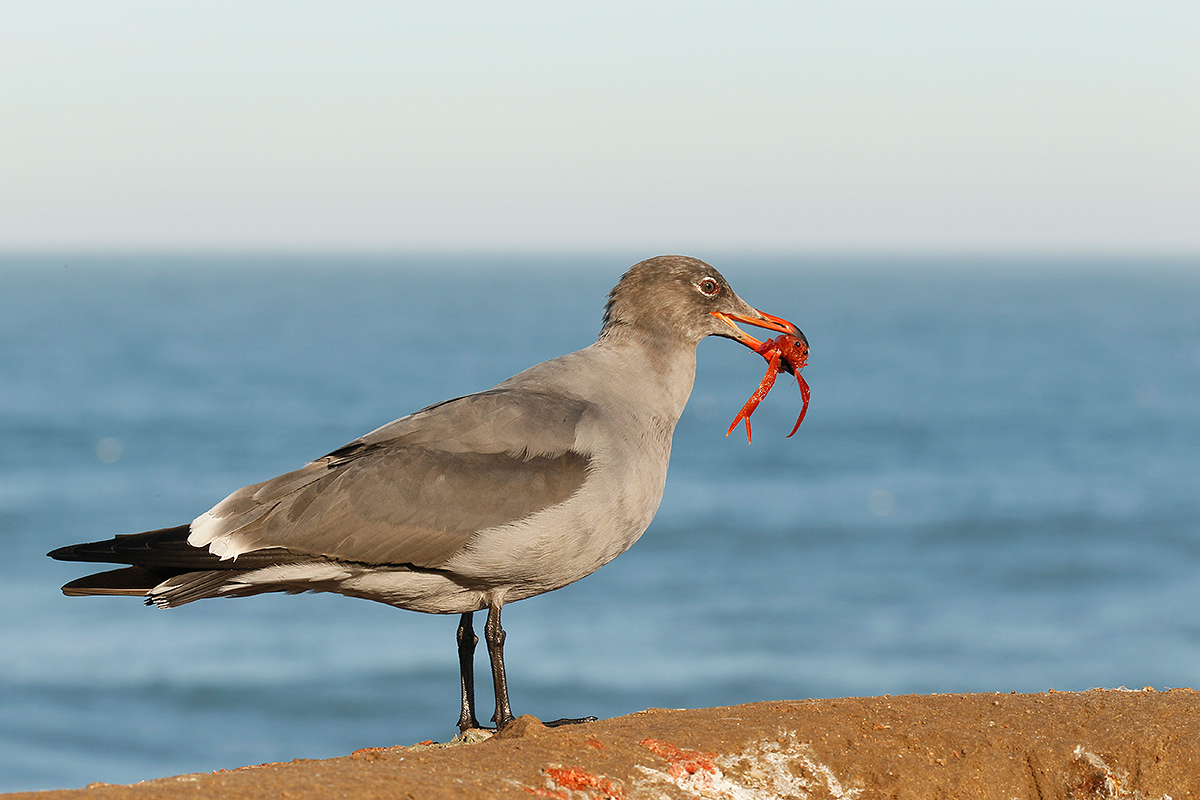
|
|
This JPEG represents the original capture.
|
Critique Please
In the follow-up to the hugely popular and somewhat controversial blog post here, Brendan left a comment that I have paraphrased here: One instructional thing I would love to see on this blog is a basic lesson on how to look critically look at one’s photos. About eight years ago I began saving series of similar images from which I planned to do an Evaluating Your Images guide. At some point, I lost that file. I started a new one and eventually lost that one too. 🙁
In the meantime we can start by looking at today’s featured image. It is sharp and it is well exposed and the bird is placed nicely back in the frame. Were it not for the baby lobster (or whatever it is) this photograph would have been deleted instantly for several reasons.
Please, please, pretty please leave a comment and let us know the major problems in this image. There are at least three major problems but two of those are closely related. Those problems are very common ones… (Folks have been getting lazy about leaving comments and keeping the blog interactive.)
BirdPhotographer’s.Net (BPN)
The very best way to learn to evaluate your images is to plunk down your forty bucks and join BPN. You post your images and have them critiqued by many of our fine moderators and lots of skilled members, and in turn, you get to learn a ton by commenting on the images of others. And best of all, it ain’t just birds! There are image critique forums that cover other areas. These include Wildlife, Macro and Flora, Landscapes, Cityscapes and Travel, Out Of The Box, In Camera and Post Processing Techniques, Framing Your Images With Words, and Story Sequences. In addition, beginning nature photographers can receive extra help in the Eager to Learn Forum. You can click here to access any of the aforementioned forums in addition to the Photography Discussion (and other) forums. If you join and post an image please e-mail me the link and I will be glad to stop by and comment.
|
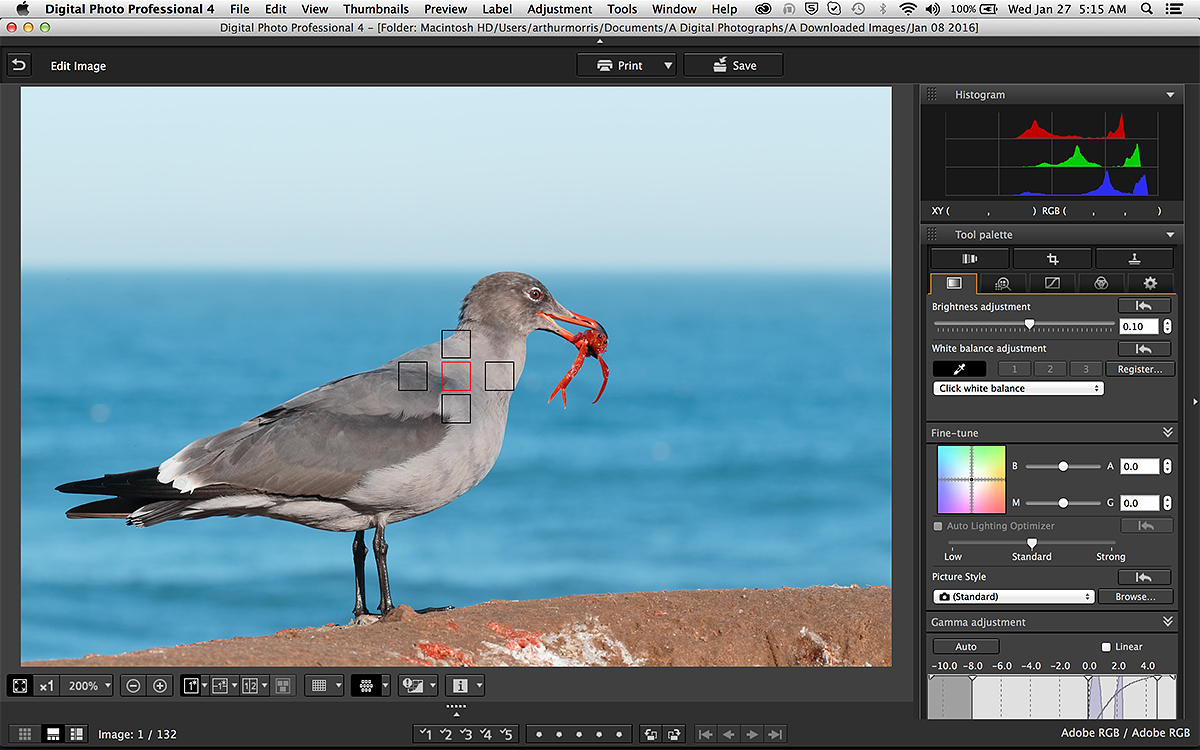
|
|
This is a DPP 4 Screen Capture for today’s featured image.
|
DPP 4 Screen Capture
The important thing to note here is that I used Click White Balance on the very white tail tip to eliminate the warm reddish cast that you can see in the JPEG that represents the original capture (today’s 2nd photo).
AF Question
Why was I limited to only the center AF point? I hear this about six times a day on most IPTs: My camera is broken; I can’t move my AF point!”
|
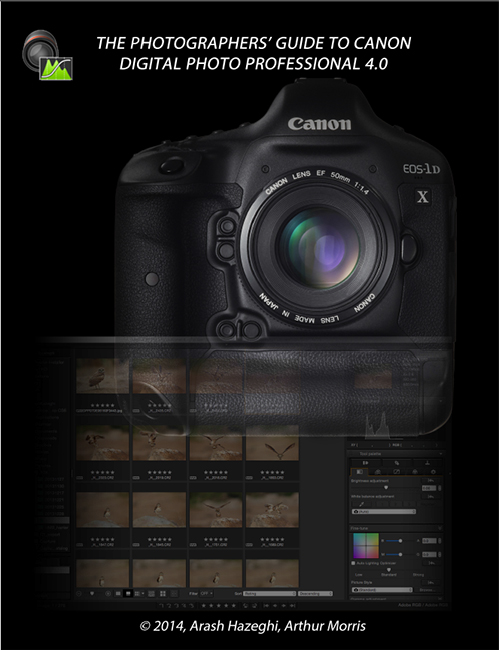
|
|
You can order your copy of “The Photographers’ Guide to Canon Digital Photo Professional 4.0” (aka the DPP 4 Raw Conversion eGuide) by Arash Hazeghi and Arthur Morris by clicking here.
|
The DPP 4 eGuide (PDF)
Learn how and why I and many other discerning photographers choose and use only DPP 4 to convert their Canon RAW files in the DPP 4 RAW Conversion Guide by Arash Hazeghi and yours truly. The latest version supports all of the newer Canon camera bodies and several older models including the EOS-7D and the EOS-1D Mark IV. The DPP IV Guide is the ideal companion to the 7D Mark II User’s Guide, a runaway best seller.
The DPP 4 eGuide (PDF) Updated for 1D Mark IV and the original 7D
The DPP 4 eGuide was recently updated to include the luminance and chrominance noise reduction values for both the 1D Mark IV and the original 7D. If you purchased your copy from BAA please e-mail Jim and request the DPP 4 1D IV/7D update. Please be sure to cut and paste page 1 of the guide into your e-mail as proof of purchase.
2017 San Diego 4 1/2-DAY BIRDS AS ART Instructional Photo-Tour (IPT) JAN 11 thru and including the morning session on JAN 15: 4 1/2 days: $1999.
(Limit: 10/openings 8)
Meet and Greet at 7:00pm on the evening before the IPT begins; Tuesday 1/10/17.
Join me in San Diego to photograph the spectacular breeding plumage Brown Pelicans with their fire-engine red and olive green bill pouches; Brandt’s and Double-crested Cormorants; breeding plumage Wood and Ring-necked Duck; other duck species possible including Lesser Scaup, Redhead, and Surf Scoter; a variety of gulls including Western, California, and the gorgeous Heerman’s, all in full breeding plumage; shorebirds including Marbled Godwit, Willet, Sanderling and Black-bellied Plover; many others possible including Least, Western, and Spotted Sandpiper, Whimbrel, Black and Ruddy Turnstone, Semipalmated Plover, and Surfbird; Harbor Seals (depending on the current regulations) and California Sea Lions; and Bird of Paradise flowers. And as you can see by studying the two IPT cards there are some nice bird-scape and landscape opportunities as well.
With gorgeous subjects just sitting there waiting to have their pictures taken, photographing the pelicans on the cliffs is about as easy as nature photography gets. With the winds from the east almost every morning there is usually some excellent flight photography. And the pelicans are almost always doing something interesting: preening, scratching, bill pouch cleaning, or squabbling. And then there are those crazy head throws that are thought to be a form of intra-flock communication.
Did I mention that there are wealth of great birds and natural history subjects in San Diego in winter?
For complete 2017 San Diego ITP info please click here.
Please Remember to use our Affiliate Links 🙂
To show your appreciation for my continuing efforts here, we ask, as always, that you get in the habit of using my B&H affiliate links on the right side of the blog for all of your photo and electronics purchases. Please check the availability of all photographic accessories in the BIRDS AS ART Online Store, especially the Mongoose M3.6 tripod heads, Gitzo tripods, Wimberley heads and plates, LensCoats and accessories, and the like. We sell only what I have used, have tested, and can depend on. We will not sell you junk. We know what you need to make creating great images easy and fun. And we are always glad to answer your gear questions via e-mail. I just learned that my account was suspended during my absence; it should be up and running by Monday at the latest.
I would of course appreciate your using our B&H affiliate links for all of your major gear, video, and electronic purchases. For the photographic stuff mentioned in the paragraph above we, meaning BAA, would of course greatly appreciate your business. Here is a huge thank you to the many who have been using our links on a regular basis and visiting the BAA Online store as well.
Facebook
Be sure to like and follow BAA on Facebook by clicking on the logo link upper right. Tanks a stack!
Typos
In all blog posts and Bulletins, feel free to e-mail or to leave a comment regarding any typos or errors. Just be right 🙂
|
|

























